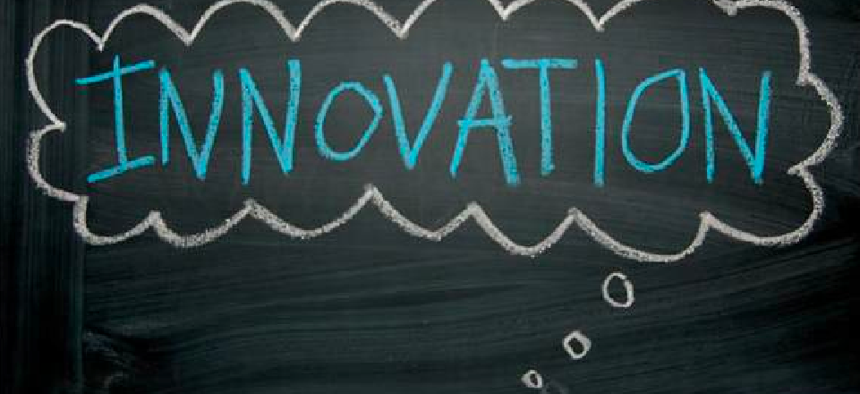
Hampton Roads Partnership (Creative Commons Licensing)
Leadership, Not Technology, is the Key to Government Innovation
Government innovation is the talk of the town, but what does it actually look like? The answer is less expensive and technology-intensive than many think.
The word “innovation” is regularly thrown around as a solution for all types of government problems, but it is rarely defined or broken down. If federal agencies are to foster a culture that embraces innovation, they need to have a clear sense of what the near ubiquitous buzzword actually means. Partnership for Public Service (PPS) Vice President for Leadership and Innovation Tom Fox helped clarify the term at Excellence in Government 2014, beginning with a simple definition from PPS’s Innovation in Government report: “the process of improving, adapting, or developing a product, system, or service to deliver better results and create value for people.” Innovation does not have to entail inventing something new or involve technology at all.
Fox described three winners of this year’s Sammies, an annual public service award presented by PPS, to showcase the variety of types of government innovation:
- Two Department of Veterans Affairs employees took a big data and systems management approach to reduce veterans’ homelessness. They found that, by making relatively small changes within existing programs, they could drastically reduce the rate of veterans homelessness.
- A federal employee at Walter Reed Medical Center decided to study elite athlete healing and recovery methods to improve rehabilitation techniques for amputees returning from Iraq and Afghanistan. He identified several best practices and brought them to Walter Reed.
- Two Customs and Border Patrol employees developed a mobile app that accurately and quickly provides critical information to border agents in order to streamline legal border crossings and expedite exportations of illegal migrants.
So how can agencies foster a broader culture of innovation? Not necessarily through popular methods like building innovation labs, starting a crowdsourcing project, or asking for a larger budget, Fox said. In fact, innovation and creativity are often most effective when they are rooted in constrained environments. There are really three essential elements of government innovation, according to Fox:
- Compelling leadership - for innovation to thrive in government, agency leaders must be exceptionally mission-driven, teamwork-oriented, and focused on continuous learning.
- Permissive processes and tools - innovation is not a “eureka moment.” It is an evolution requiring patience and persistence. Agencies should promote processes that encourage reframing problems, refine innovative solutions, and help navigate bureaucracy. One audience member highlighted her agency’s program that allows those with innovative ideas to attend a “bootcamp” where they refine and fully develop their ideas to present to agency leadership, as a positive example.
- Recognition - more than bonuses, federal employee most often want recognition for the work they do serving the public. Providing opportunities for employees to win awards for innovation is the most overlooked aspect of fostering a culture of innovation in government, Fox asserted.
Fostering a culture of innovation has become a hot topic in government in recent years, but few can identify what exactly that entails, and a misguided emphasis on acquiring new technology impedes true innovation. In reality, government innovation does not need to be expensive or technology-intensive to generate efficiencies and improve mission effectiveness. It can be as simple and difficult as sticking your neck out for a different way of thinking.
For more from 2014 Excellence in Government, check out GBC’s EIG2014 recap series.
This post is written by Government Business Council; it is not written by and does not necessarily reflect the views of Government Executive Media Group's editorial staff. For more information, see our advertising guidelines.



